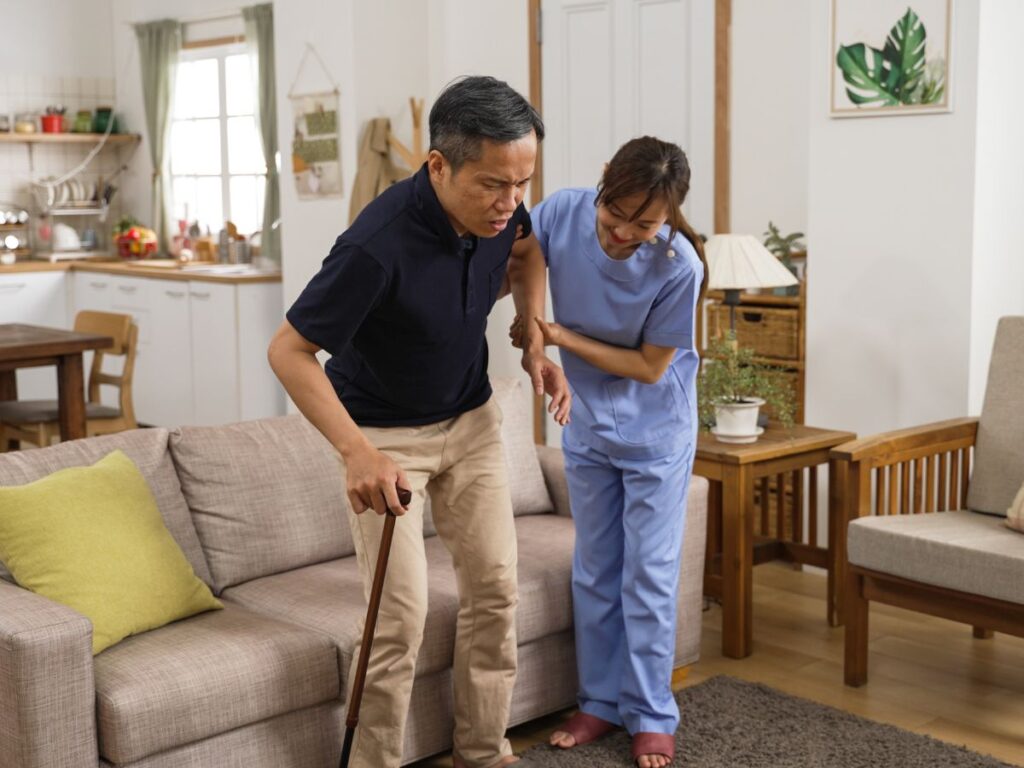Understanding ALS Stages, When to Consider Home Health Care, & How They Can Help
A progressive neurodegenerative disease, ALS gradually robs individuals of their ability to move, speak, eat, and eventually, breathe. While the disease follows a recognizable path of progression, the timeline and symptoms vary significantly from person to person, making it crucial for patients and families to understand the stages and what each phase might bring.
And mind you, ALS isn’t just about being aware of the symptoms—it’s about knowing when to take action and seek the right kind of support. That’s where home health care comes in, providing help that becomes increasingly vital as the disease advances and the emotional and physical demands grow heavier for both patients and caregivers. This guide outlines the seven stages of ALS to help you anticipate what’s ahead—and explains how home health care can step in at key moments to ease the burden and offer meaningful support.
What is ALS and Different Stages of ALS
Amyotrophic Lateral Sclerosis (ALS), also known as Lou Gehrig’s disease, is a progressive neurodegenerative condition that targets motor neurons—the nerve cells responsible for controlling voluntary muscle movement. As these neurons gradually deteriorate and die, individuals with ALS lose the ability to initiate and control muscle actions, affecting mobility, speech, swallowing, and eventually, breathing.

Early Symptoms Stage
In the earliest ALS stages of the disease, symptoms are often subtle and easy to overlook. These may include:
- Muscle weakness or twitching in the arms, legs, or tongue
- Cramps and spasticity, particularly after activity or during rest
- Clumsiness, such as difficulty with buttoning a shirt or turning a key
- Speech changes, including slurring or difficulty projecting the voice
Some individuals experience limb-onset ALS, where weakness starts in the arms or legs, while others may have bulbar-onset ALS, which first affects speech and swallowing. At this stage, many people still maintain independence, though unexplained fatigue and muscle symptoms often prompt medical evaluation.
Middle Stage
As the stages of ALS symptoms progress, symptoms become more widespread and pronounced. Muscle weakness extends to other regions of the body, and previously mild issues begin to disrupt daily life. Common developments during this stage include:
- Noticeable difficulty walking, climbing stairs, or maintaining posture
- Trouble swallowing or chewing, leading to weight loss and nutritional deficits
- Speech impairment, making communication more effortful
- Breathing issues, especially when lying flat
- Emotional changes like depression or pseudobulbar affect (uncontrolled crying or laughter)
Assistive devices such as walkers or wheelchairs may become necessary. Some individuals also require feeding tubes or noninvasive ventilation to maintain nutrition and respiratory health.
Late Stage
In the late ALS stages, there is near-total loss of voluntary muscle control. Individuals experience:
- Paralysis of nearly all voluntary muscles
- Loss of mobility, requiring full-time care
- Inability to speak or eat, relying completely on PEG tubes
- Dependence on mechanical ventilation due to respiratory muscle failure
- Cognitive changes, including signs of frontotemporal dementia in some patients
At this point, home care in Los Angeles and families play a vital role in supporting the patient’s quality of life and dignity. While communication may still be possible through eye movement or assistive technology, functional independence is largely lost.
End-Stage ALS and Death
In the final stage, ALS leads to complete paralysis with the exception of eye movement in most cases. Death typically occurs due to respiratory failure, though with ventilation support, some individuals can live longer. On average, life expectancy is three to five years from symptom onset, but around 10% of patients may survive 10 years or longer.
Why Choose Home Care for ALS Patients?
While medical advancements and assistive technologies provide some relief, caregivers are the central force in implementing these tools and maintaining a safe and comfortable environment. Here’s why:
Physical Support: Managing Day-to-Day Activities
As ALS progresses, even basic physical tasks can become difficult or impossible. Home caregivers step in to assist with:
- Mobility support, including using leg braces, splints, and transfer boards to safely move from beds, chairs, or bathrooms.
- Daily hygiene routines, using shower chairs, lift chairs, and rising toilet seats to simplify bathing and toileting.
- Feeding and nutrition, such as managing adaptive eating utensils, preparing modified diets, or maintaining a feeding tube when swallowing becomes unsafe.
- Medication management and reminders to ensure consistency in symptom relief and mental health treatment.
Rehabilitation and Physical Therapy Assistance
Maintaining joint flexibility and range of motion is critical for ALS patients. While patients may not be able to perform these exercises independently, caregivers ensure that physical therapy routines are followed—especially range-of-motion exercises for the shoulders and limbs to prevent stiffness and pain. Additionally, caregivers monitor mobility changes, assess walking and standing stability, and collaborate with therapists to adapt routines for safety and effectiveness.
Respiratory and Nutritional Support
Breathing becomes progressively difficult in ALS. Noninvasive ventilation, such as BiPAP machines, is commonly used to support nighttime breathing. Caregivers help operate and maintain these machines, ensure they are correctly fitted, and monitor for signs of respiratory distress.
In later stages, feeding tubes may be introduced to prevent choking and maintain adequate nutrition.
Communication and Cognitive Engagement
As speech becomes impaired, communication devices become a lifeline. Caregivers are instrumental in setting up, troubleshooting, and encouraging the use of tools like eye-tracking computers or speech-generating devices. They also play a vital role in keeping ALS patients mentally and socially active, from helping write emails to coordinating video calls or reading aloud.
Equipment Management and Adaptation
ALS care often requires the integration of complex adaptive equipment. From power wheelchairs and hospital beds to environmental control systems and computer switches, caregivers are trained to operate and maintain these devices. Their role also includes:
- Identifying the right tools at each stage of the disease
- Working with medical teams to procure necessary equipment
- Adapting the home for improved accessibility and safety
Conclusion & CTA
For families, knowing when to seek outside help can be a turning point. While it’s natural to want to do everything personally, ALS is not a disease that can be faced alone for long. Ultimately, the decision to incorporate home care is a decision to prioritize quality of life. That’s where Family Ties Home Care, one of the top rated home health care in Los Angeles comes in.
Serving families across Los Angeles, we specialize in compassionate, personalized in-home care tailored to the unique needs of individuals living with ALS. Our experienced caregivers are trained to provide hands-on physical support, assistive device operation, nutrition and respiratory assistance, and emotional companionship—ensuring that your loved one receives the highest standard of care be it long term or short term senior care, without leaving the comfort of home.
